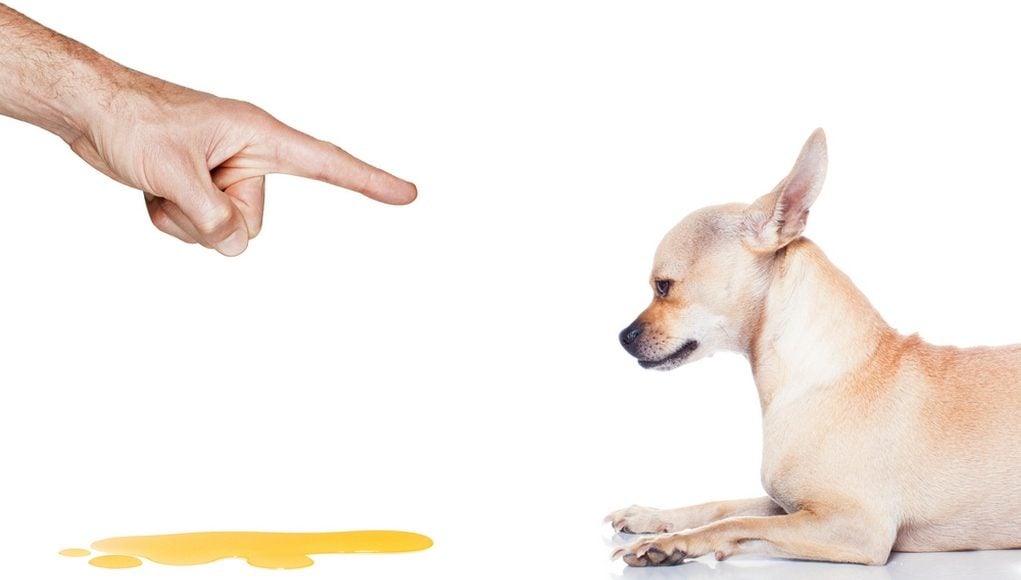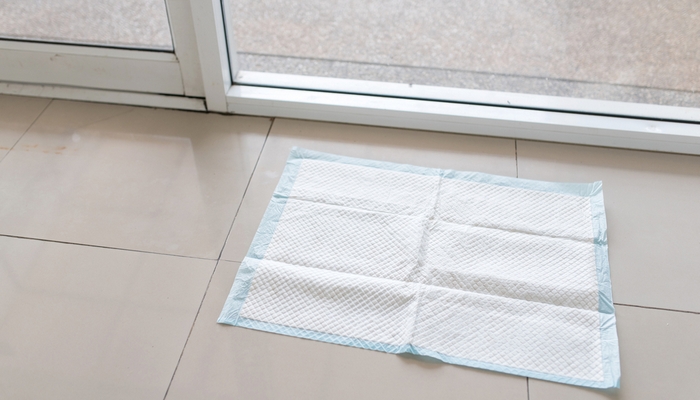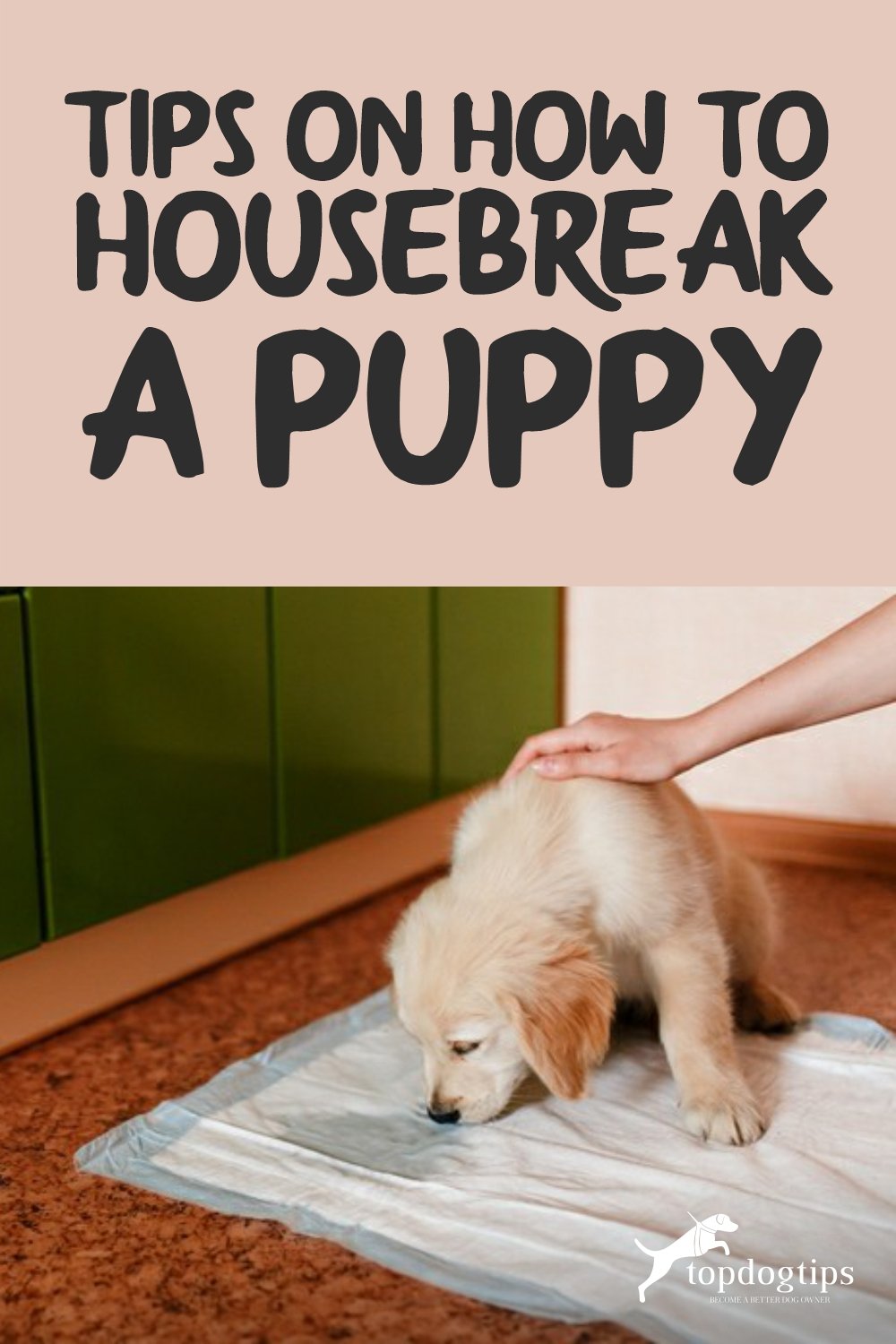You don’t have to stick with cats if you hate the task of house training. Every pet owner that has ever had the pleasure of potty training a puppy can understand the frustration that comes along with the job.
After I have personally have gone through the process twice, it always seems like no matter how hard you try to stick to a schedule, your little bundle of fur will still mess on the floor at least a few times a day when you're potty training a puppy.
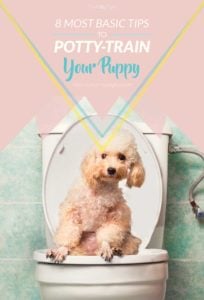 Dog owners looking to adopt a puppy need to know that it's going to be a lot of work.
Dog owners looking to adopt a puppy need to know that it's going to be a lot of work.
Especially when wanting to house train a puppy, you're going to need time, determination and a lot of patience. This isn't something that's going to happen overnight, even if you've done it before. Unlike other tasks, potty training a dog is different every time.
Some dogs will pick up on house training very quickly, while it may take months to fully train others. Following the tips below will help you to house train a puppy quicker.
If you are a dog lover, don’t let the fear of potty training a puppy keep you from the joys of owning a dog. Be patient and go into it knowing that your puppy will have accidents. Be prepared for them with pet products to help with cleaning. Here on Top Dog Tips, we've got you covered with plenty of advice and how-to videos. Check these:
- How To Toilet Train A Puppy (step by step video)
- 15 Best Puppy Potty Pads for Toilet Training Dogs
- 10 Tips on Toilet Training Puppies
Also, make sure everyone in your house knows the method you will be using to train your new dog. Everyone needs to be aware of the importance of doing things the same way, every time. If you are willing to put in a little extra work in the beginning, you can quickly move past this phase of dog ownership and onto the more enjoyable days ahead.
READ ALSO: 26 Step Checklist for Adopting a New Dog or Puppy
8 Tips to Effectively Potty Train a Puppy
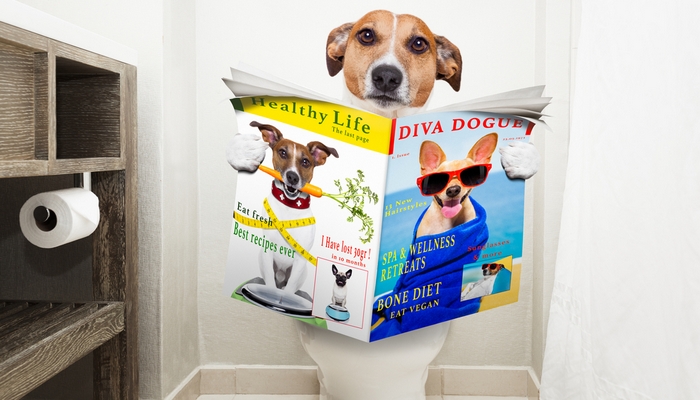 1. Puppy Pee Pads
1. Puppy Pee Pads
These are great to use for puppies, and older dogs that have moved to a new household. When I was a new dog owner, I stayed away from these because I really didn’t believe they worked. They do!
Puppy pee pads make house training a lot less messy. I also have known people who live in apartments, and have small dogs, that stick to pee pads throughout the dog’s life. It's important to pick good quality puppy pee pads that actually work well for this.
FOR YOU: Best Puppy Potty Training Pads – Test & Video Comparison
Never put pee pads on carpet. Sometimes your furry friend may catch the edge of the pad and some clean-up will be needed. Puppy’s bladders are not fully developed until they are several months old, so it's wise to put a pee pad where the puppy sleeps as well.
Pee pads are also great for older dogs that are losing bladder control. When it comes to pee pads, the bargain price is not always the best brand. I don’t use the most expensive, but I don’t use the cheapest either. You want to find pads that absorb well, and have a good attractant.
Put the pad where you want the puppy to go. Move it closer and closer to the door until one day, the pad is outside. After a while, you can stop using the pads completely. My little dog went in a spot that she wanted to go in, not on the pee pad.
I eventually realized this and moved the pad where she liked to go. Voila! She started using the pee pad, and I gradually moved it to where I wanted it.
2. Puppy Breed
If you don't have much patience with potty training a puppy, breed matters. Some breeds are easier to house train than others. This can be because of issues with intelligence, stubbornness, territory, etc.
If you love dogs, but hate potty training, look into choosing one of these breeds:
- Poodle
- Greyhound
- Bichon Frises
- Labrador
- Boston Terrier
Many breeds are easy to house train, it's not limited to those five. Just be sure to do your research and choose an intelligent dog breed that is easy to train. The best advice I can give is if you are interested in a breed, look up its strengths and weaknesses before making the commitment.
RELATED: How To Puppy Proof Your Home
3. Start Training Early
Just because a canine’s bladder is not developed at a young age does not mean you wait to begin potty training a puppy. The earlier you start, the better. I have had a 5 week old puppy use a pee pad every time she was placed on it. This made for a lot fewer messes.
Remember to praise your fur baby every time he goes outside. Use treats, toys, or affection. DO NOT scold your dog for accidents. This can actually hurt your relationship with your new four-legged family member.
RELATED: How To Crate Train A Dog (video guide)
4. Crate Training a Puppy
Dogs do not like to poop and pee where they sleep. For this reason, many people potty train their puppies using the dog crate training method.
Ensure that the puppy crate is only be big enough for your canine friend to turn around, stand, and lie down (the video below demonstrates this). If it is too big, he will just go potty in one corner and lay down on the other side. There are ways to prevent this.
Also, be consistent. Your puppy needs to be in the crate anytime you are not able to watch him. As soon as you get home or finish cooking supper, immediately take Fido outside to potty.
Don’t view the kennel as a punishment. One of my dogs loves his kennel. He goes in it to get away from the other dogs, or to hide when it thunders. He prefers his kennel to our bed to sleep in. You can put a dog bed, comfy pet blanket, puppy toys or doggy chews in the dog crate to make it more comfortable and appealing.
RELATED VIDEO GUIDE: How To Choose the Right Size Dog Crate
5. Keep Track of Time
One of the biggest things to remember is to keep track of time. How long were you gone? Did you pee while you were gone? If you did, chances are, your dog needed to as well.
Your fur baby really might not have been able to hold it. Doesn’t this happen to you sometimes? When you have to go, you have to go.
Your dog may have a kidney infection or other illness that keeps him from being able to wait as well. Be sure you're observing his bathroom schedule and take note if he starts urinating more frequently.
In our house, if we are going to be gone for more than a couple of hours, we put pee pads down. Better to be safe than sorry. Also, even if you're tired, housebreaking will happen faster if you take you furry friend out first thing in the morning and right before bed.
READ ALSO: 11 Tips on How to Use Dog Crates Safely
6. Consistency
Choose a method that works for you and stick with it. Your canine friend will get confused if you are strict one day, and lazy the next. When your puppy is young, you will need to get up at night and let her potty.
Never let your dog poop or pee inside of the crate. That sets up bad habits.
Remember to praise your puppy for going potty outside – every time. My dogs are a few years old and they still come to me for affection and a “good dog” every time they go outside. Keep in mind that dogs usually go about 30 minutes after eating. Puppies may need to poop sooner – like right after eating. Always bring your canine out at these times.
 7. Know Your Dog
7. Know Your Dog
Pay attention to your dog. Just like people, dogs have different personalities and needs. Just because most puppies go right after eating, and most dogs 30 minutes after, does not mean that yours will.
When potty training a puppy it is important to learn your pet's unique schedule. Some puppies and dogs can hold their urine longer than others.
It may be size, breed, or something else, but if your dog can’t hold it very long, you may need to make adjustments to your potty routine. If you are consistent and observant, it will take no time for you and your dog to fall into a routine that works for everyone.
RELATED: 5 Most Common Problems with Crate Training Dogs
8. Potty on Command
I have a big fenced-in yard, so my dogs go out when they want. The ability to potty on command is great for people who live in apartments or take their dogs to public places.
Just like with other methods of puppy training, you must be consistent. House training is one thing, but teaching your dog to pee on command is a much more in-depth command. The younger you start, the easier it will be.
Use the same word every time, and say the word just as your dog is beginning to go. Use treats and praise afterward just like you would with any other trick you are teaching your furry friend.
WATCH NEXT: How To Train A Dog To Poop On A Leash
WANT TO SHARE THIS?


